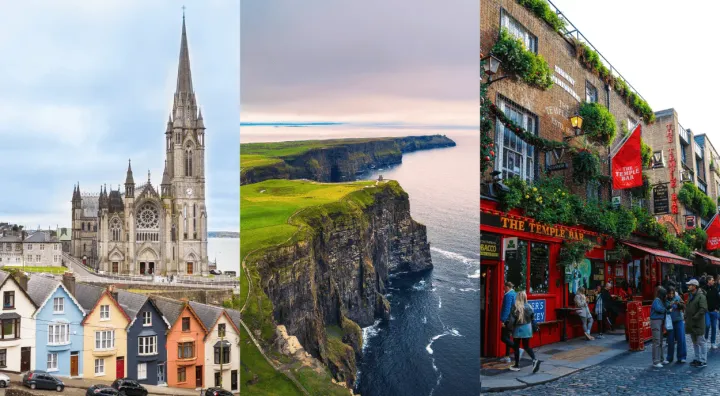Iceland Digital Nomad Visa: Application and Requirements

Iceland feels like it belongs to another world: a land of volcanoes, glaciers, black-sand beaches, vivid green highlands, and electric blue lagoons. Yet, as breathtaking as it is, the high cost of living, unpredictable weather, and remote location can make it seem daunting for digital nomads.
While Iceland doesn’t offer a dedicated Digital Nomad Visa, staying long-term is easier than you might think. Expats already make up around 25% of the workforce, and the country’s Long-Term Remote Work Visa now allows remote workers and travellers to live and work from this land of ice and fire.
In this guide, we’ll cover everything you need to know, including eligibility and application steps, visa validity, and what life in Iceland is really like for digital nomads.
Quick Visa Facts
Visa validity period
Up to 6 months, non-renewable
Extendable?
No, must wait 12 months before reapplying
Who can apply?
Remote employees, freelancers, or entrepreneurs working for companies or clients abroad
Minimum income requirement
ISK 1,000,000/month (approx. USD $7,200) or ISK 1,300,000 (approx. USD $9,400) for couples
Application cost
ISK 12,200 (approx. USD $85)
Processing time
Around 2–4 weeks
What Is the Iceland Remote Work Visa?
Iceland’s Long-Term Remote Work Visa was introduced in October 2020, with the dual aims of helping Iceland’s economy recover post-COVID-19 and attracting more remote workers to the country. It allows eligible remote workers, who are self-employed or employed by companies outside Iceland, to reside in Iceland for 90 to 180 days.
It’s intended for those who don’t plan to stay in Iceland permanently, and you can’t work for an Icelandic employer or contribute to Iceland’s workforce in any way throughout your visa duration. However, you can bring your spouse and dependent children with you, as long as they also meet the visa requirements.
You may be granted a visa for up to 180 days if you apply from your home country or outside the Schengen zone. But if you’re already in Iceland, the maximum amount of time you’ll be granted is 90 days, so keep this in mind before applying.
Who Can Apply for the Iceland Remote Work Visa?
The visa targets remote workers, freelancers, and entrepreneurs who are employed outside of Iceland, but you must meet all of the following requirements to be granted a visa:
- You must live outside of the EEA / EFTA
- You must be able to enter the Schengen zone without a visa
- You don’t plan to settle permanently in Iceland
- You can prove a minimum monthly income of $7,200 USD (or $9,400 USD when applying with a cohabiting partner)
- You meet health insurance requirements, including a minimum coverage amount
How to Apply for the Iceland Remote Work Visa
The visa application process is relatively straightforward, but to make it even easier, we’ve broken the whole process down into a few simple steps.\
Step 1: Complete the Application Form
The L-802 application form can be found on the Directorate of Immigration’s website, at the bottom of the page.
Step 2: Send The Processing Fee
Send the processing fee of 12,200 ISK (about $99.74 USD) to the Directorate of Immigration via bank transfer. Keep a physical proof of payment, as you’ll need to send this in with your application.
Step 3: Prepare Your Supporting Documents
You’ll need the following supporting documents:
- A 35x45mm passport photo taken within the last 6 months
- A photocopy of your passport that is valid for at least 90 days past the visa expiry date, which displays:
- Your personal information page
- Signature page
- Visas
- Schengen entry/exit stamps from the past year.
- Health insurance documents displaying validity, coverage amount, and duration
- Employment documents that either:
- confirm you are self-employed or;
- that you work for an international employer who has given you permission to work remotely from Iceland
- Proof you meet the minimum income requirements (i.e. an employment contract with your monthly salary details, or client contracts with agreed payments for the visa duration if you’re self-employed or a freelancer).
- Criminal record certificate, if requested by immigration.
Step 4: Send Your Application
Your application form, processing fee receipt, and all supporting documents must be posted by regular mail to the Directorate of Immigration. Alternatively, if you’re already in Iceland, you can pay the processing fee and submit your application at the Directorate’s reception in person.
Iceland Remote Work Visa Timeline
The process will only take about 3 to 4 weeks if there are no issues with your documents and the Directorate doesn’t request additional information. If you’re already in Iceland, the current advice is to apply with at least 14 Schengen days remaining.
What Happens Once Your Iceland Remote Work Visa Is Approved?
You’ll receive confirmation from the Directorate of Immigration once your visa is approved, but the visa itself won’t be issued until after you arrive in Iceland. You’ll need to contact the Directorate once you arrive to receive your visa, which will be valid from the date of issue.
Pros and Cons of Living as a Digital Nomad in Iceland
Iceland’s reputation as a land of extremes and contrasts isn’t limited to the scenery. It’s also true of the amazing benefits, but not inconsiderable drawbacks, that it offers international travellers and remote workers.
Pros
- Incredible scenery right on your doorstep
- High proportion of international workers and expats, especially in the cities
- Extremely safe country, holding the top spot on the 2025 Global Peace Index
- 3rd happiest country in the world, after Finland and Denmark
- Internet speed is ranked among the best in the world, at 280 Mbps, with fiber-optic and 5G connection across the country
- Accessible, straightforward visa designed to encourage and support the remote working lifestyle.
Cons
- 3rd most expensive country in the world, so the cost of living is very high
- Harsh climate, with average winter temperatures of -1 degrees Celsius and as little as 4-5 hours of daylight in winter
- Quite isolated, with 95% of the population concentrated in the urban centres in and around Reykjavík
- A 4W drive car is ideal to explore the country, as public transport is mostly limited to urban areas. But there are also plenty of tours available
- The visa duration is quite short at 180 days, and you might be restricted to just 90 days if you apply when already within Schengen
- Iceland has recently seen increased volcanic activity, and while this doesn’t normally impact the main cities, there is a risk of increased air pollution
Cost of Living in Iceland for Remote Workers
Iceland is one of the world’s most expensive countries, so be prepared to up your monthly budget. Below is the breakdown of what you can expect to spend:
- Rent: about 252,500 ISK (around $1994 USD) per month for a one bedroom apartment in a non-expensive area in Reykjavik. For Akureyri, you’re looking at 220,000 ISK ($1738 USD) per month for a one bedroom apartment.
- Utilities: about 13,318 ISK ($109 USD) per month for electricity, water, heating etc. Internet (over 60Mbps) will cost around 9,965 ISK ($81 USD) per month
- Groceries: around 80,000 to 100,000 ISK per month ($570-$720 USD). Restaurants can cost up to 9000 ISK per person (about $71 USD). Food halls, like Pósthús Food Hall & Bar in Reykjavik, are a cheaper alternative when eating out.
- Transport: An adult bus ticket costs around 670 ISK ($5.50 USD) in Reykjavík. If you want to rent a car, prices start from about 8906 ISK ($63.39 USD) per day in summer. Fuel prices are around 300 ISK per litre (about $2.14 USD).
- Coworking: There are a few options, but memberships can be pricey. Regus Coworking is the primary Coworking option in Iceland, with 15 locations throughout the country. An unlimited monthly membership starts from around $397 USD.
Best Places in Iceland for Digital Nomads
Reykjavík
Iceland’s capital city, Reykjavík, is undoubtedly the best place to base yourself as a remote worker, despite the high cost of living. Home to 75% of Iceland’s population, Reykjavík is laid-back but lively, with cosy cafes, a thriving nightlife, and stunning attractions like the Blue Lagoon and Þingvellir National Park close by. The community is warm and welcoming (quick tip: head to the local swimming pool or take some lessons in Icelandic to meet new people!). There are plenty of coworking options, including Haus, which has 2 spaces in trendy downtown Reykjavík, and Regus Coworking, which has 7 locations throughout the city.
Akureyri
Nicknamed the “Capital of the North”, Akureyri is the largest town outside of the Reykjavík area, and it’s situated right on the famous Ring Road. It has Reykjavík’s easy-going vibe without the crowds, as well as a thriving art and live music scene. In Akureyri, you’ll have stunning sites like the Goðafoss Waterfall, Lake Mývatn, and the Forest Lagoon on your doorstep. Rent and daily living costs are slightly cheaper, too, but northern Iceland can feel more isolated. As in the capital, Regus Akureyri is your best coworking option.
Borgarnes
If you’re seeking a quieter base and a more rural, close-knit side of Iceland, Borgarnes is an excellent choice. It’s home to 3800 residents, so it’s more suited to a cosy, slower-paced lifestyle, but there’s a Regus Coworking which has a strong community vibe, and there’s a good variety of accommodation available. The town is walkable, but a car is ideal to reach nearby locations like Skallagrímsgarður Park and to explore the Ring Road. However, it can feel very isolated, and the smaller population may make it more difficult to build connections.
Ready to Live and Work in Iceland?

Join our global
digital nomad community
Join us for free
Freaking Nomads is supported by you. Clicking through our links may earn us a small affiliate commission, and that's what allows us to keep producing free, helpful content. Learn more





 Travel tips, hacks, and news
Travel tips, hacks, and news Exclusive travel discounts
Exclusive travel discounts Offers and promotions
Offers and promotions Digital nomad inspiration
Digital nomad inspiration Latest articles form our blog
Latest articles form our blog